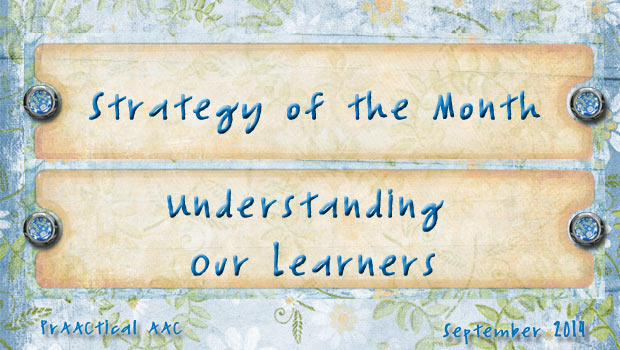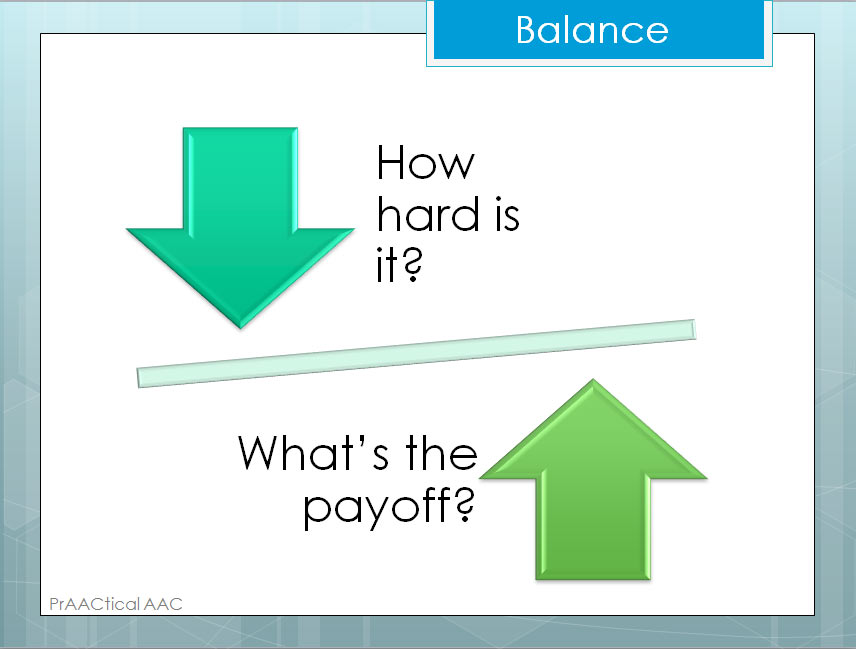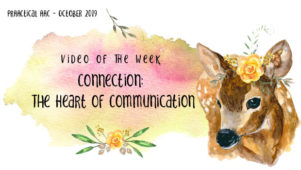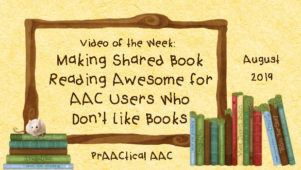Strategy of the Month: Understanding Our Learners

This month, we’re thinking about what it takes to create therapy sessions that engage our AAC learners. A big piece of that is challenging learners at an appropriate level. It’s a simple concept, but can be tricky to translate for an individual learner and task.
As much as we try to, it’s hard to really get a feel for what our clients are experiencing. Our bodies work well, for the most part,  so we don’t automatically account for differences in sensory processing, motor control, executive functioning, cognition, or memory. We try. We really do. But I’m not sure we do it as well as we hope to do. Revisiting these concepts as an intellectual exercise isn’t going to fix that, but for me (and maybe some of you), it can serve as a helpful reminder.
so we don’t automatically account for differences in sensory processing, motor control, executive functioning, cognition, or memory. We try. We really do. But I’m not sure we do it as well as we hope to do. Revisiting these concepts as an intellectual exercise isn’t going to fix that, but for me (and maybe some of you), it can serve as a helpful reminder.
Awareness
Ours is an empathetic profession. Still, we don’t always truly understand what our clients are going through. How much effort does it take our client to attend? Process what we’re saying? Cope with the stress of new people, places, activities, materials? Adjust to changes? Connect with others? Move in ways they want to? Deal with the pace of interaction?
It may be useful to step back and reflect on this periodically. When the pace of the session is brisk, we see efficiency, but maybe they experience it as being hurried and rushed. Next time, maybe I can really watch for their reaction or try to slow the pace of some of the activities to see if the client is more relaxed or successful. We use a least-to-most prompt hierarchy to build independence. To our clients, though, that might be perceived as pressure to produce. I may not want to change my prompting strategy, but if this seems to be an issue, maybe I can increase the level of encouragement and reinforcement.
It’s not always possible or desirable to make these kinds of changes, but it’s worth considering. And we can’t make those considerations unless we’re aware of the need for them.
Balance
Would you eat a slug for $10.00? For $100.00? For $1,000.00? What about for $1,000,00? If you’re like most people, your answer changed as the amount went up. This isn’t a hard concept to grasp, but we don’t always apply it that well to our therapy. If it’s time-consuming or difficult, and not perceived as worth the time and effort, then we probably don’t have learner engagement.
We’re not likely to be all that successful in our intervention when the outcome (payoff) isn’t meaningful enough for the learner. If we want them to learn, we have to change something about the equation. Chances are, they wouldn’t eat a slug for $10.00 either.
Filed under: Strategy of the Month
Tagged With: awareness, balance, effort, engagement
This post was written by Carole Zangari





